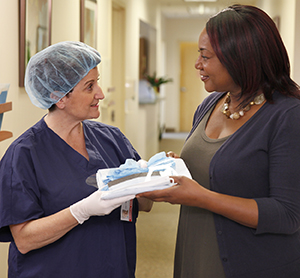Transmission-Based Precautions: Droplet
Transmission-based precautions help prevent the spread of certain infections by focusing on strategies based on their modes of transmission. Droplet precautions are one type of transmission-based precaution. Always use droplet precautions in addition to standard precautions.
When to use droplet precautions
Some germs are carried in moist droplets. These drops travel a short distance (about 3 feet) when an infected person coughs, talks, or sneezes. The drops also contaminate objects and surfaces they fall on. Use droplet precautions with patients known or suspected to have certain infections as outlined by your facility, including:
How to use droplet precautions
The patient should be placed in a private room with a private bathroom. If this can’t be done, check with your facility’s infection control department. Also:
-
Wear a mask, particularly when you are within 3 feet of the patient. Or you may wear a mask at all times when in the patient’s room. Follow your facility’s guidelines.
-
Keep other patients at least 3 feet away from the infected patient.
-
Have family members and other visitors wear masks and other appropriate personal protective equipment (PPE). Educate visitors on when and how to put on, remove, and dispose of PPE.
-
Limit patient movement or transport only when it is medically necessary. The patient must wear a mask and follow Respiratory Hygiene/Cough Etiquette during such movements. Alert the receiving department.

Preventing contamination
-
Remove your gloves and other PPE before leaving the room. Wash your hands well before leaving.
-
Make sure the patient has their own patient care equipment (including the stethoscope, blood pressure cuff, thermometer, and commode). If an item must be shared, clean it with disinfectant between patients.
-
Encourage the patient, family members, and other visitors to cover their mouth and nose when coughing or sneezing and to use tissues. Remind them to dispose of used tissues properly.
-
If you touch an object in the room with your gloves, remove your gloves and dispose of them before leaving the room.
-
Don't touch your mouth, nose, or eyes during patient care.
Online Medical Reviewer:
Heather M Trevino BSN RNC
Online Medical Reviewer:
Marianne Fraser MSN RN
Online Medical Reviewer:
Shaziya Allarakha MD
Date Last Reviewed:
8/1/2024
© 2000-2024 The StayWell Company, LLC. All rights reserved. This information is not intended as a substitute for professional medical care. Always follow your healthcare professional's instructions.